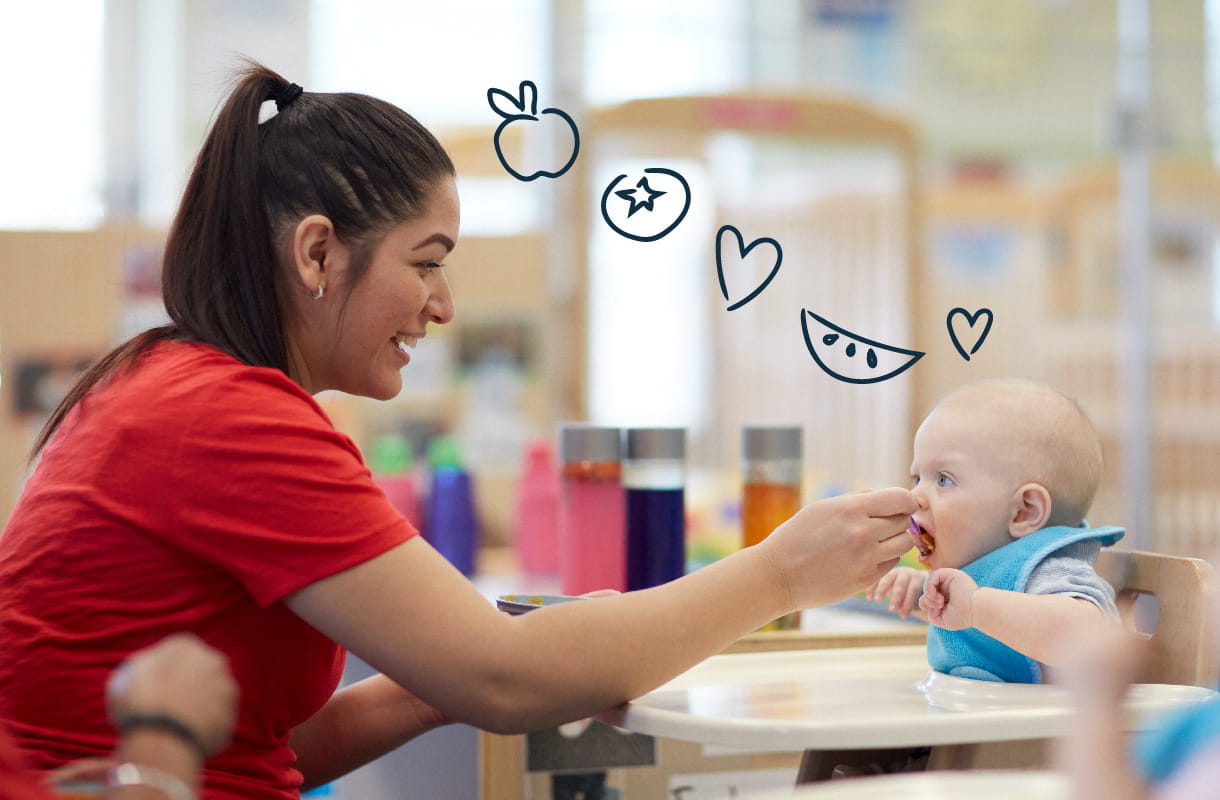From Milk to Mashed Peas and Beyond: First Foods for Baby

Our teachers get all kinds of questions in our centers about feeding their babies: Which is better—breast or bottle? How much should a newborn eat? When do babies start eating baby food?
Baby Feeding Chart for Newborns to 1-Year-Olds

*This information is for informational purposes only and is not a substitute for professional medical advice or treatment. Please consult a qualified medical professional with any questions you may have regarding a medical condition or treatment.




